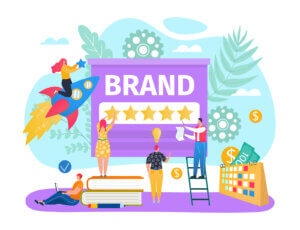|
|

We often spend time thinking about how our potential customers view our products or services, but we often focus on the offering instead of the audience considering that offer.
How would your customers classify what it is you do? Are you a luxury? A nice to have, or are you actually a necessity?
As consumers, we all got very clear about what we needed versus what we wanted in 2020. If something you offer was still in high demand this past year, you know your customers consider it an essential purchase. You should be going to market with a very different strategy for products and services that are must-haves, as opposed to being more of a “nice to have” offering.
Granted, there were some needs that were pandemic-specific. Masks, toilet paper and hand sanitizer aren’t always going to be on the top of everyone’s shopping list. But if your organization sold a lot of a specific product or service that wasn’t triggered by the most basic needs of security, safety and health, then you’ve got something that people will continue to categorize as a must-have.
The significant advantage you get when your product or service is considered essential is that you can cut to the chase. You don’t have to convince your prospects that they should buy what you’re offering. They’ve already decided that they need it. Your marketing needs to answer three critical questions that the buyer has on their mind:
- How is yours better than your competitors’?
- What are the mechanics of buying it? (Do I have to order it direct? Does it require a purchase order? How is it packaged and priced? And so on.)
- Is this a one-time purchase? If not, what’s the timing of recurring purchases?
The first question is all about features. In classic marketing, we often talk about not focusing on the features but instead narrowing in on the benefits. But your consumer doesn’t need to be convinced that they need what you sell; they already understand the benefits.
So you need to ignore conventional marketing wisdom and dig into the features. What does it do that the others do not? Help me understand why choosing one of your competitors’ products would be a disappointment or a riskier choice.
The second question is all about the how. In 2020 we all learned how vital it was to be very specific and directive to assist our potential customers in making the actual purchase. Even with a must-have, buyers want to understand their options and look for the most convenient purchase path. COVID-19 forced many businesses to find contactless or friction-free ways to buy. I don’t think consumers will let go of those options once we’re free from the pandemic.
The third question has a lot of elements wrapped up in it. But they are all about the investment required. In some cases it’s about the money, and in the case of services, it’s often about the consumer’s time commitment. It’s also about the quality and durability of what you sell if it’s a product. If you sell something that people will need to keep purchasing, convenience will also be a factor.
Understanding the lens through which your customers and prospects see what you sell can help you hone in on your messaging that will be most helpful to them and shorten the sales cycle. Recognizing that your audience has already decided they need this particular product or service will allow you to cut to the chase and just show them why your particular offering is the right choice for them.
This was originally published in the Des Moines Business Record, as one of Drew’s weekly columns.
